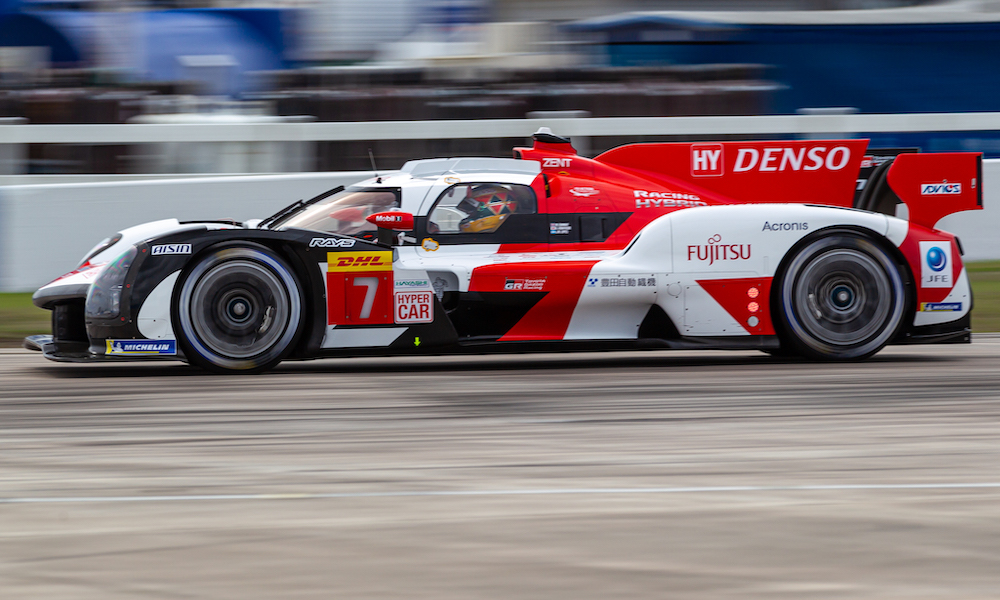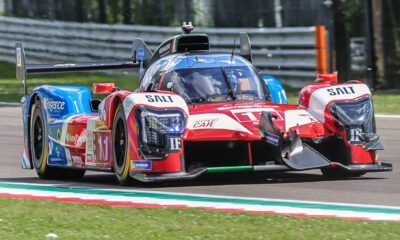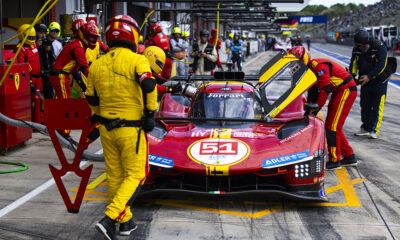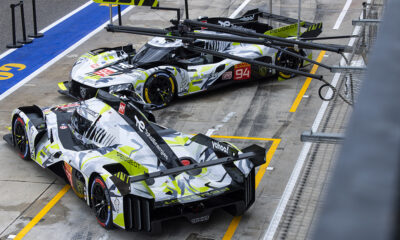Toyota Gazoo Racing’s FIA World Endurance Championship technical director Pascal Vasselon has clarified that the manufacturer did not use any of its five allowed Evo jokers on pre-season updates to the Toyota GR010 Hybrid.
Toyota last week revealed an updated LMH car ahead of the 2022 WEC campaign, featuring different sized front and rear wheels plus associated bodywork modifications to maintain aerodynamic performance.
It was believed at the time that the Japanese marque had used one or more of the WEC’s so-called Evo jokers, which are defined as “modifications requested for performance reasons”. However, Vasselon has since refuted that notion.
Speaking to reporters shortly after the pre-season Prologue test at Sebring, he explained that the Toyota updates hold their roots in a change to the LMH technical blueprint that took place before the platform made its debut last year.
Their implementation as corrective measures rather than performance upgrades means that they cannot be classified as Evo jokers.
“We started the development of our car in 2018 for the regulations which have been validated in December 2018,” Vasselon told Sportscar365.
“Since then, there have been several changes. One change happened in 2020 to prepare for the convergence with LMDh, which suddenly changed the minimum weight from 1100 to 1030 kg.
“This change we are fully on board with. We accepted it because it was a condition for convergence. But we could not fully achieve this. It has hurt us in terms of weight distribution.
“We could not meet the weight distribution that was planned initially, simply because we had ballast with 1100 kg. The tires we had last year were absolutely not suited to our weight distribution.
“This is something that we have openly discussed with all shareholders. The fact that we had to change tires was a kind of no-brainer. It goes beyond performance.”
Toyota addressed its weight distribution problem by changing the dimensions of its wheels, bringing in 12.5-inch widths on the front and 14-inch widths on the rear.
That move naturally brought about new Michelin tires. The Toyotas now use the French manufacturer’s 29/71-18 size on the front and 34/71-18 on the tail end.
“It is all driven by the change of tires,” said Vasselon.
“We had to change tires just to have the correct tire when we had our weight, when we had a more rearwards weight distribution than initially planned.
“When you do that, you have to bring your car back into the aero window. You can’t just put bigger wheels on; it just doesn’t work.
“So we had to do some minimal bodywork changes to bring [it] back in the aero window.
“What has cost most of the work is to get back the aero stability. This is why we have small fins and so on. This is why it is nothing to do with performance. It is only to recover the aero stability.”
Toyota’s confirmation that its updates to the GR010 Hybrid were done without Evo jokers comes after Glickenhaus did the same when it applied a brake-by-wire system to its non-hybrid 007 Pipo LMH for the coming season.
Glickenhaus also confirmed on Sunday that it is making some engine modifications to “run a little better” on the WEC’s new bioethanol-based fuel.
Toyota announced last week that it had tweaked the settings on its 3.5-liter V6 internal combustion engine in response to the introduction of the ‘100 percent renewable’ product from TotalEnergies.
Hybrid Activation BoP a “Big Change”
A significant change in the BoP for the Hypercar class this season is the possibility for race-by-race adjustments to the moving speed at which the Toyota’s all-wheel-drive can be activated.
The GR010 Hybrid carries a 200 kW electric motor on the front axle, but its power can only be deployed at a certain speed. Last season that speed, in dry weather, was fixed at 120 km/h by the LMH technical rules but it can now be changed as a BoP parameter.
At Sebring, the Toyotas can activate full hybrid power upon hitting 190 km/h (118 mph).
Commenting on how the cars reacted to the 70 km/h increase in activation speed, Vasselon said: “It’s a big change. In fact we are now rarely using four-wheel-drive.
“Above 190 it is a big change. For us, this Balance of Performance is a big hit. You have very few corners above 190 km/h so it means we use it very rarely.
“When you can apply power at the front on corner exit, it’s additional power compared to what the rear can do. So you accelerate faster. Now, we are really limited until 190.”
Toyota has tested a wide range of hybrid activation thresholds to prepare for the new BoP procedure.
“We did not know exactly what would happen, but during testing we have scanned different deployment speeds,” Vasselon explained.
“There we have confirmed that it was quite an important hit. We have been scanning nearly a full range between 100 and 200 km/h, just to learn. It is to correlate with our simulations.”




























